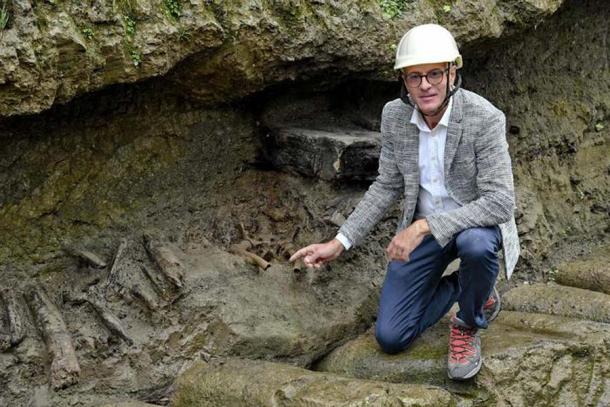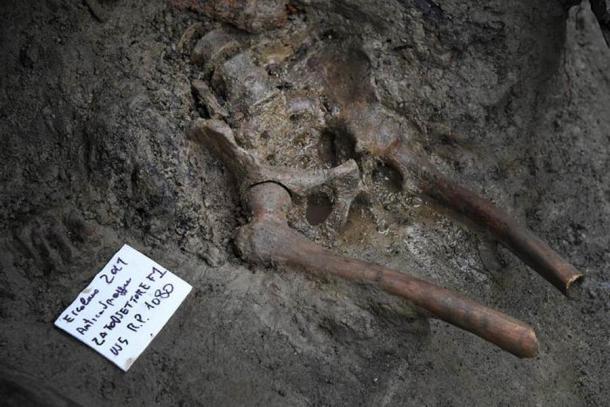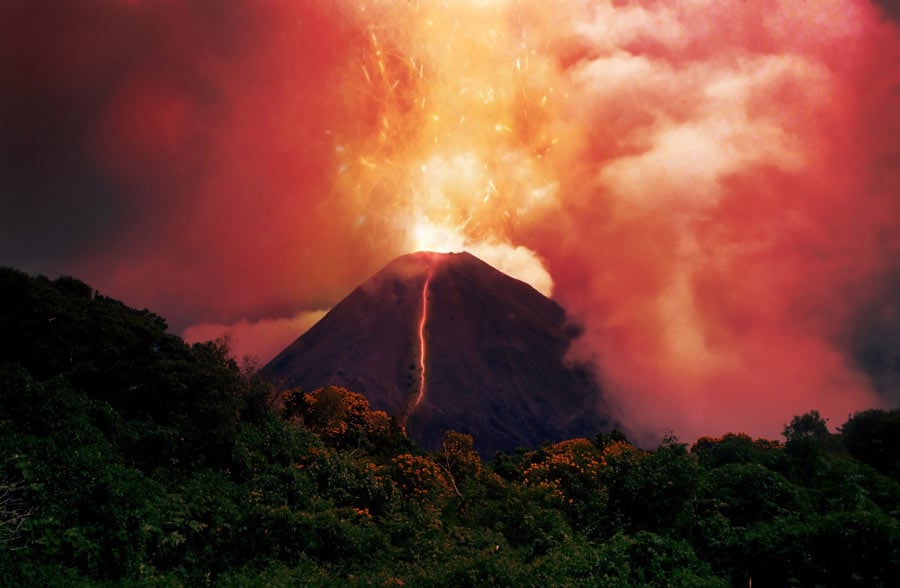Mutilated Remains of a Man Trying to Escape Vesuvius Eruption Found
Mount Vesuvius occupies a very special place in the fables and tales of not just the Neapolitans of the southwestern Italy, but also in accounts written by the Greeks and Romans. The Romans saw Vesuvius as a representation of Hercules, the strong and adventurous son of Jupiter. The mountain is notorious for the Vesuvius eruption that decimated Pompeii and Herculaneum in 79 AD. Recently, the sensational partially mutilated remains of a man buried by the eruption have been found near the old beaches of Herculaneum.
Dario Franceschini, Italy’s culture minister, said: “The sensational discovery of the remains of a fugitive at the archaeological site of Herculaneum is great news, first of all because the find is due to the resumption in this place, after almost 30 years, of scientific excavations conducted by the ministry’s technical staff.”

Ercolano Archaeological Park director Francesco Sirano at the location in Herculaneum, where the skeleton of the victim fleeing the Vesuvius eruption was found. (ANSA)
Pompeii’s Vesuvius Eruption Killed Many In Herculaneum
This middle-aged man, between 40 and 45 years old, was in the process of fleeing the eruption, and was just seconds from reaching the sea at Herculaneum but was unable to make it. His skeleton was found on what was once the ancient beach, with the positioning of the head pointing back in the direction of the sea, surrounded by carbonized wood, probably an indication that a roof beam might have crushed his skull, reports The Guardian.
Ercolano Archaeological Park director Francesco Sirano told ANSA that, “…He was lying down, facing inland, and probably saw death in the face as he was overwhelmed by the molten lava that buried his city. He could have been a rescuer. The fascinating hypotheses surrounding the mystery of the death of this last discovered victim of the 79 AD eruption are now in the hands of experts, who can rejoice at this result which is also due to the support of the Packard Humanities Institute.”
- Hiding From Mount Vesuvius Prolonged Victims' Deaths
- Secrets in 2,000-Year-Old Scorched Scrolls of Herculaneum to be Revealed with New Tech
The last minutes of life after the horrific Vesuvius eruption can be seen through the prism of this newly discovered skeleton. Herculaneum’s shoreline used to be in Ercolano but was pushed back because of the Vesuvius explosion.
The only previous surviving eyewitness account consists of two letters by Romans Pliny the Younger, to the historian Tacitus.
"The last moments here were instantaneous, but terrible," stresses Sirano. “It was one o'clock at night, when the pyroclastic surge produced by the volcano reached the town for the first time with a temperature of 300-400 degrees Celsius [572-752 degrees Fahrenheit], or even, according to some studies, 500-700 degrees [932-1292 degrees Fahrenheit]. A white-hot cloud that raced towards the sea at a speed of 100 kilometers [62 miles] per hour, which was so dense that it had no oxygen in it. This inferno… in the space of a few minutes engulfed and swallowed up the upper part of the town, uprooting the roofs and mowing down men and animals with a heat such as to make their bodies evaporate.”

A closeup of the Vesuvius eruption victim’s lower torso and upper legs found near the beach of Herculaneum, south of Naples, Italy. (ANSA)
The Catastrophic Vesuvius Explosion of 79 AD
The explosion of 79 AD remains one of the most catastrophic events in human history, and one of the most destructive eruptions ever. To understand the scale of the event, consider that it generated 100,000 times the thermal energy of the Hiroshima-Nagasaki bombs!
Preceding this event, in 62 AD, a great quake had severely impacted the Bay of Naples area, including Pompeii and Herculaneum, and a lot of this damage had not been repaired when Vesuvius exploded. From Pliny’s accounts, one can also gauge that people of the area were aware of constant small tremors and seismic activity in the area. In fact, four days before the eruption, a series of small quakes rocked the region as a precursor event.
Interestingly, in 1995 BC, the Avellino eruption of Mount Vesuvius engulfed the area’s surrounding Bronze Age settlements This was the first recorded quake to have severely impacted human settlement, and the most recent one occurred in 1944. Studying the rock formation of the volcano, scientists have found that Mount Vesuvius is made of Mesozoic rock, and that it has been active for 400,000 years!
While the total death toll remains unknown, an estimated 1,500 to 2,000 people allegedly died, as per conservative estimates. In related archaeological digs during the 1980s and 1990s, the skeletons of more than 300 victims piled in boat sheds were discovered. They are believed to have been taking shelter as they waited for sea boats to come to their rescue.
- Volcano-blasted Herculaneum Roman Soldier Tells His Ancient Secrets
- X-ray Tech Reveals Remarkable Roman Artistry Hidden Under Ash of Vesuvius
Even today, Vesuvius remains a danger to local inhabitants. It is the only active volcano on the European continent. And the only one to have erupted within the last 100 years. Nearly three million people live in its immediate vicinity, which poses a grave threat to home, property and lives. The Mount Vesuvius area is the most densely population volcanic region in the world today.
Top image: The Mount Vesuvius eruption of 79 AD claimed countless lives including a man who almost made it to the beach at Herculaneum. Source: James Steidl / Adobe Stock
By Sahir Pandey
References
AFP. 2021. Newly found skeleton may bring fresh insights on Vesuvius eruption. Available at: https://www.timesofisrael.com/newly-found-skeleton-may-bring-fresh-insights-on-vesuvius-eruption/
ANSA Redazione. 2021. 'Sensational' fugitive skeleton found at Herculaneum. Available at: https://www.ansa.it/english/news/2021/10/15/sensational-fugitive-skeleton-found-at-herculaneum_9dc02abd-c1c3-4477-b2f4-7b46c64ce928.html
Giuffrida, A. 2021. ‘Sensational’: skeleton buried in Vesuvius eruption found at Herculaneum. Available at: https://www.theguardian.com/science/2021/oct/15/sensational-skeleton-buried-in-vesuvius-eruption-found-at-herculaneum



















